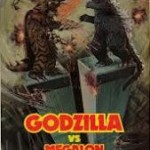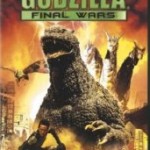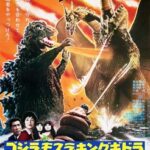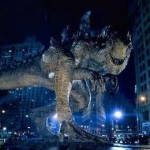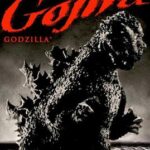Since I already have a page describing Godzilla’s film career, as well as reviews of each of these films (click on the titles to get to the reviews), I can just dig in. There are 33 films: 29 Japanese live-action, 1 three-part anime, and 3 American remakes. So here we go, starting with the worst:
An embarrassment to the six-year-olds it was intended for, there is nothing good about this cheap clip show. It is a successful argument against you ever claiming that Godzilla movies are cool. This is everything wrong with children’s entertainment splatted together into pablum.
The ’70s were not a good time for Godzilla. The films were all childish in the worst way, the suit work was…poor, and the stories were even worse than the wrestling movies. And this is the worst of them. Godzilla is an after-thought in his own film which is really a pilot for a rip-off giant robot TV show.
Yet another of he anti-bullying kids films that has a giant Muppet teaching a toad-man how to stand up for himself. The human side plot is actually the best parts. The money was gone from the franchise, so this was made on a budget and it shows. It takes place on an island because it’s a lot cheaper to have your monster walking around on the ground then to have cities to smash.
The second worst in the run of bad ’70s films (the others are coming soon), this one has intelligent space cockroaches (disguised as humans, of course) controlling an evil monster double-team is a plastic model of Ghidorah and a turkey with a dull spinning blade in its tummy. It looks as stupid as it sounds, and is not helped by the ever-changing appearances of the monsters, that depends on which previous film they swiped the footage from.
The ’90s Godzilla films were a step up, except for this one. A team of first-timers to the franchise slavishly repeated recent errors while bringing back the mistakes of the past. We’ve got the overly complicated plots of boring humans from the “Heisei” era merged with the poor FX and heroic Godzilla from the earlier “Showa” era, all tied together with a cheap ribbon.
The worst sin any film can commit is to be boring, and this American reboot is so boring. Godzilla is barely in the film. Instead the runtime is filled with exceptionally uninteresting humans doing things I didn’t care about. It goes on and on and I just wanted the damn “lead” to get squished so he’d be out of the film. So…boring. And this is a color film. Use some color! Every frame is murky teal.
The main thing this has going for it is Mechagodzilla. He’s significantly less sill than anything Godzilla had faced in the last decade. The guy in the dog costume who helps Godzilla, he’s every bit as silly. The human story doesn’t mess things up as much as usual, and the aliens controlling Mechagodzilla aren’t good, but aren’t any worse than the previous films’ aliens.
There’s so much good here and so much to think about. Unfortunately, there’s also so much talking. And yelling. There are great ideas here, but it needed at least an hour less chatting and arguing.
This is essentially a B&W film, with teal taking over for white. But then you can’t see much of anything anyway. Pull back the camera, lay off the fog, and turn on a light other than teal! Besides the look, the tone is deadly. This is a big adventure popcorn movie. And those should be fun. But this is solemn and completely humorless. It’s not thoughtful, so why does it all have to be so grim? There’s a few moments which will get giant monster fans’ blood pumping, but that’s it.
If only all the coolness of a giant monster rumble would be a bit less stupid and look less terrible. Well, then it would be Final Wars. There’s lots of monsters, and aliens, and there is a big battle, though most of the time is spent with those annoying humans. I saw this at the theater when I was 7, and enjoyed it, but even then I knew it was dumb as a bag of rocks and wanted better.
The franchise closed down for nearly a decade after this. So would I. A direct sequel to Godzilla vs. Mechagodzilla, it continues the trend of aliens (space apes here) controlling monsters to fight Godzilla. There’s nothing good here, but it is less bad than Gigan and Megalon, and that’s some kind of victory for the ’70s.
Cheap was the word in the second Godzilla on an island movie. It’s also a film designed for King Kong that only uses Godzilla due to licensing problems, which explains why Godzilla suddenly has the hots for a beautiful girl. There’s also a giant lobster, which doesn’t really hurt anything. The result is OK. This is an OK film.
Well, it could have been fun, had they been able to make a decent ape suit, but this is one of the worst in a long line of pretty bad costumes. There’s no fun to be had with the giant monsters outside of laughing at them, and thing don’t improve with the “zany” comic relief humans who fall down a lot. But where else can you see Asians in Black-face with Afro-wigs? Is that something you want to see?
The first of the space opera Godzilla films that would dominate the ’70s, it’s very campy and fun. Most of our time is spent with two humans; what’s new is that one is American. Toho started sticking one American actor in their monster films to try and sell some tickets State-side. Well, Nick Adams isn’t good, but he isn’t the worst 3rd-rate actor they got for a film (see Russ Tamblyn). This means there is no undubbed version of the film as Adams was dubbed for the Japanese version and everyone else for the English one.


After his success in revitalizing the Gamera franchise, Toho brought in Shusuke Kaneko to do the same for Godzilla. It didn’t work. The idea is that Godzilla is no longer a radioactive dinosaur, but instead is infused with ghosts. Yeah, he’s supernatural, and to beat him, you need guardian spirits, like Ghidorah, because he’s a good guy. I suppose this all could have worked, making some grand statement, but it doesn’t. As a serious picture (and this is that), there needed to be a focus on the suffering of some relatable humans, but none are available. All the fighting could be good in a light adventure flick, but this isn’t one of those.


This reboot (yes, again) is mild fun that avoids many previous problems but never jells. The humans stand around and comment on the action, which is better than them dominating a movie when they’ve got nothing to do. Godzilla himself had never looked better, which is great as this film is all about the monster fighting. Unfortunately, the giant mosquito leaves much to be desired.
Godzilla vs Mothra didn’t need a loose remake, but it got one, with the addition of an evil caterpillar. Godzilla wasn’t even in the first draft but Toho figured their Mothra movie would sell more tickets with Godzilla in it, so there he is. It isn’t bad, but if you want the basic Mothra story, there are several better films to choose from.
This may be the stupidest Godzilla film, which really means something. Future evil-doers travel through time, bringing at least one not in on their plan, stop in present day to grab a few folks for no good reason, then travel back to WWII to stop Godzilla from being made and instead, turn 3 bad Muppet puppets into Ghidorah. Helping them is an android that either rollerskates or moves by having the film speed change. It’s all ridiculous, but kinda fun.
#15 – Gojira (1984)
For their first official reboot, they wanted to take Godzilla back to his serious and dangerous roots. They went for grim and they succeeded. I assume they also wanted an emotional message and top notch filmmaking as in the ’54 original. There they didn’t do so well. Well, it isn’t fun, but it also isn’t embarrassing, so that’s something.
A new Godzilla arises, mainly around an area of Styrofoam cubes, and has his first battle with another giant monster. The second Godzilla film is very much like the American atomic monster films of the same time. And like most of those, it is enjoyable without being memorable or anything special.
The one Godzilla film of the ’70s worth seeing and it’s a trip. Godzilla stands up against pollution, represented by a giant glob. Why is there a love-in at the top of a mountain? Why are there inserted animations? Why do all the dancers suddenly have fish heads? This one is meant for those of you who are one toke over the line.
In yet another reboot, the government builds a giant robot from the bones of the dead Godzilla from ’54 to fight this new one. While they are fighting, this is great. When not, the focus is on on the awkward and unfulfilled romance, the trials of the drab pilot, a child that blurts out pointless moral mumbojumbo, and the planning of the prime minister and science minister, and none of that is good. But hey, Godzilla is looking good.
The only film in the 2000s to carry continuity, we’ve still got Godzilla and Mechagodzilla battling it out. They are joined by Mothra in yet another telling of the basic Mothra story. The human characters are even worse than in the last film, but the monster fights look good, and that’s what you are here for.
Well, for yet another reboot, this was odd. In the most radical redesign of the monster and its history since the “host of ghosts” version, Godzilla starts out as a string puppet who morphs into a more familiar form, but now with lasers shooting out from all over his body. It’s disco ball Godzilla. He’s also only in the film a few minutes, and could have been cut and replaced by any generic disaster. This film is about how old-school politicians are ineffective, and it is up to a re-energized and right-wing nationalistic youth to save the future.
Godzilla really did fight a lot of Godzilla robots. And those fights are solid and particularly good for their time. The Godzilla side of this film is really good. The human side is particularly weak. Don’t pay too much attention until the 20 minute big battle and you’ll be happy.
Who’d have thought a giant rose would have been one of Godzilla’s best adversaries? She’s interesting and engaging, which are not words one generally uses for these films. There’s more humans vs humans and humans vs Godzilla than Godzilla vs plant, but the side stories are not as problematic as they often are.
If you want stupid fun, this is it. Essentially a remake of 1968′s Destroyed All Monsters, Godzilla: Final Wars is less a movie than it is a celebration of 50 years of Godzilla, as well as genre filmmaking in general. There’s too little Godzilla and way too much time spent with uninteresting humans, but that’s often the case in Godzilla films. This is a fun if nonsensical ride for geek fans, and an overly kinetic mess for anyone else.
Godzilla returns after a brief hiatus, in a film that offers nothing new, but does all the old stuff a little better. The effects are snazzier, the acting is less amateurish, the child is less annoying, the buildings and military vehicles are far more realistic, the monster fights are cooler, and the story…well, the story isn’t any stupider. As a meaningless, fun Godzilla movie, this is one of the best.
It’s all about Ghidrah. The rest isn’t great, but with a golden, three-headed, lightning breathing, planet-destroying dragon in the wings, nothing else matters. Toho was changing the focus from family fun to kids-only, so things got worse rapidly after this. But those films are higher on this list, and this one is a lot of fun.
The end of the Heisei series (’84-’95), Toho decided to kill off Godzilla and do it in as spectacular a fashion as possible. They kept the human side-stories to a minimum and kept the focus where it needed to be: on the giant beast who was about to explode. Destroyah, the villain monster, is lacking, but that’s been true many times before.
Here I’ll run into trouble. This American reboot gets way more hate than it deserves, mostly for the dumb-ass reason that “That’s not my Godzilla,” a phrase I wouldn’t take seriously from a four-year-old. You know the Japanese Godzilla was once a huge collection of vengeful WWII ghosts. Is that your Godzilla? If you can’t get over the name, just call it something else. This is a fun, light monster romp, It’s not great art, but there aren’t many giant monster movies that are, and only one on this list. It’s well-made FX dinosaurs in New York. Relax and enjoy it.
This is how you make a fun, family, adventure film. The humans don’t get in the way, Godzilla is still a monster and not a friend, and Mothra is a god. There’s a message, there’s combat, and it joyful. If you want the best of diakaiju without being deeply serious, this is your place.
And here is were we switch from “fun” films, to genuinely brilliant filmmaking. Great acting, great score, and a powerful theme. Forget every war movie, drama, or documentary you’ve ever seen connected to the atomic bomb. Want to know what it is like having one dropped on your country? Watch this. It’s so good that the butchered American version is still a decent film and would come in 3rd on this list.











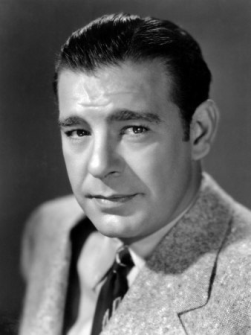 The third of the Big Three icons of classic horror (
The third of the Big Three icons of classic horror (




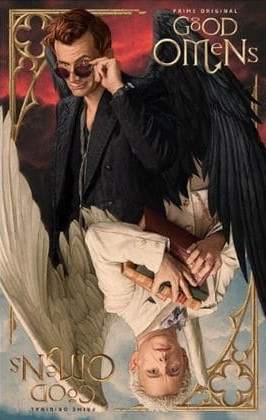 I enjoyed the Neil-Gaiman-Terry-Pratchett-based mini-series Good Omens well enough, but I was filled the entire time with the feeling that it should be more. Crowley, the not-so-evil demon is delightful, and David Tennant’s performance even more so. The interaction between Cowley and the angel Aziraphale (Michael Sheen) is a good time, though it’s mainly Cowley, and those two are the heart of the series.
I enjoyed the Neil-Gaiman-Terry-Pratchett-based mini-series Good Omens well enough, but I was filled the entire time with the feeling that it should be more. Crowley, the not-so-evil demon is delightful, and David Tennant’s performance even more so. The interaction between Cowley and the angel Aziraphale (Michael Sheen) is a good time, though it’s mainly Cowley, and those two are the heart of the series.
